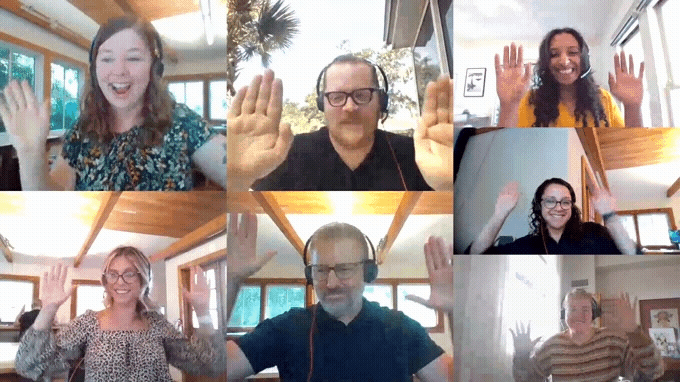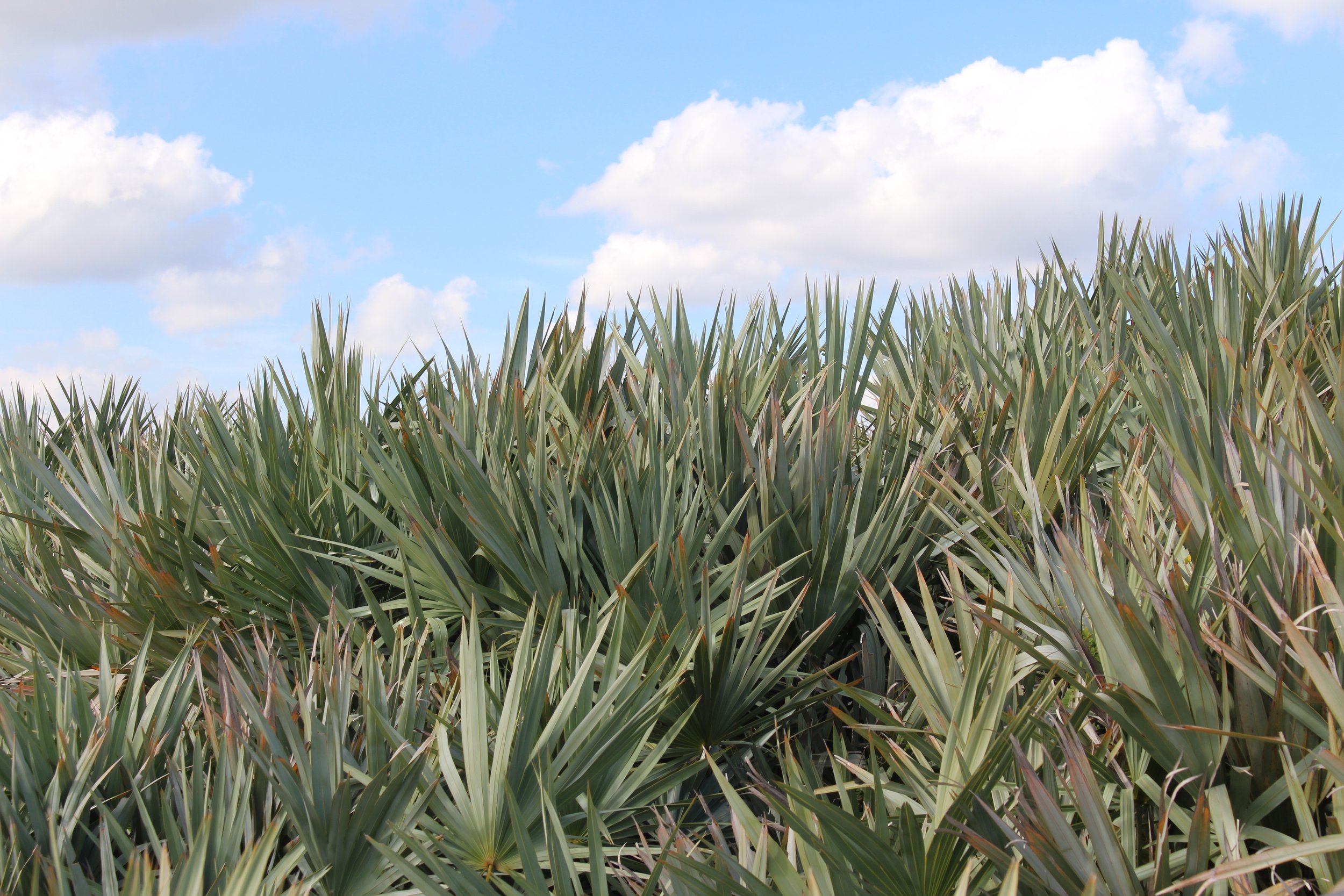Inside the Palmetto Studio
As landscape architects, we’re passionate about native plants and the sustainable practice they represent. Incorporating them into the public spaces we design not only helps protect native ecosystems, saves water and lowers maintenance, but also helps educate and connect people to place.
With a growing team and plenty of work lined up in 2022, we decided to name our six studios after a few of our favorites: Zamia, Magnolia, Sassafras, Palmetto, Fakahatchee and Mimosa. Today, we’re taking you inside our Palmetto studio to learn more about our designers and their namesake.
Eye of the Palmetto Tiger
The studios have really taken to their new names, so it wouldn’t be surprising to learn about inside jokes and secret handshakes, but Palmetto has taken camaraderie to a new level with what they call the “Palmetto Bug Jig.”
A few members of the Palmetto studio demonstrate the
Palmetto Bug Jig during a virtual meeting.
Designer Michaila Adrian can be caught dancing the Jig most often. She has been credited with creating the dance moves, along with the accompanying sound effects (“skitter, skitter, skitter"), during an early conversation about palmetto fronds swaying in the wind. The swaying motion turned into skittering up a tree, which quickly escalated into official dance moves that are now used to celebrate studio achievements.
This studio has a vibe. It’s rumored they sing “Eye of the Tiger” by Survivor to get pumped before the start of each meeting. We confirmed this to be true on at least one occasion. Designer Emily Whisenant, who ironically is from Palmetto, Florida, can be found whistling this anthem in the morning in tribute of her days at Palmetto High (go, Palmetto Tigers!)
Studio manager, Madeline Steigerwald, is described as the team’s fairy godmother and often called Princess Leia. Though she’s currently on maternity leave, her team says they imagine a miniature hologram of Madeline sitting on their shoulder mentoring them through tight deadlines as she whispers, “You are the client’s only hope.” Dramatic, but effective.
Abigail Fisher, a recent intern-turned-employee and an all-around free spirit, is known for climbing trees and talking to the vegetable plants in our garden. Why? Because it helps them grow, of course. She single-handedly kept the garden going throughout the pandemic.
Principal Sheeba West, who recently returned to the Dix.Hite team, has a knack for asking just the right questions. She pushes the team by making them consider a different perspective, which results in more thoughtful designs. She must have developed this superpower from her twenty-plus years of knowledge and experience working in the profession.
When asked about a moment that made him proud of his studio, designer Byron Hubbard recalled the time when David Hoppes, studio leader and principal, sent a personalized meme referencing the movie “Back to the Future” to a client. The client loved it, and Byron pointed out: “We don’t just send plans to clients, we build relationships.”
Clients can confirm: This studio’s chemistry is amazing, and they’re a joy to work with. And the projects they work on benefit from their fun and creative vibe, too. 4Roots Farm, St. Pete Distillery, Green Island Ranch—just to name a few—all have that certain “je ne sais quoi.”
All quirkiness aside, this studio is a well-oiled machine.
Sabal palmetto trees in the background and Saw palmetto in the foreground on site at Walker Ranch.
When we asked them whether the studio was named after Florida’s state tree, the Sabal palmetto, or the iconic Serenoa repens, the answer was simply: both. We won’t make them choose, so you get a two-fer.
Cabbage Palm, Sabal palmetto
If you’ve been anywhere outdoors in Florida, you’ve probably seen this ubiquitous palm, but it’s also common along the coastal plains of Texas, Georgia and South Carolina. The look of this tree, especially once it reaches heights of 40 to 60 feet tall and sheds its characteristic boots, is reminiscent of the Truffula trees in Dr. Seuss’s classic tale, “The Lorax.” And they are just as loveable.
Abby on an early site visit to Coastal Oaks Preserve with very old Sabal palmetto trees in the background.
Sabal palmetto (pronounced SAY-bull pahl-MET-oh) is more commonly called Cabbage Palm or Swamp Cabbage due to its edible nature. Early settlers to Florida often harvested the new palm fronds located at the heart of the tree to cook up the famous ingredient found in palm salad. Unfortunately, harvesting the heart kills the tree, so it’s not exactly a sustainable treat.
Hurricane proof, easy to transplant and adaptable, Sabal Palms are nearly indestructible and can live for hundreds of years. In Florida, they can be found deep inland submerged in swamp water or sprouting from sand dunes along the beach. They bend and sway to hurricane-force winds, whereas pine or oak trees topple over, and can fit in the tiniest of parking lot islands. Together, they can even create a shady grove to hang your hammock in.
Saw Palmetto, Serenoa repens
Saw Palmetto is another iconic native plant of the southeast, endemic to peninsular Florida and the coastal plains from Texas to South Carolina. We find it everywhere: pinelands, hardwood hammocks, sand dunes and sand pine scrub. There’s nothing more picturesque than a sea of silvery green palm fronds against the blue sky.
A thicket of Silver Saw Palmetto against a blue sky.
Slow growing and long lived, the oldest known specimen lived to be 700 years old! They’re named after the saw-like teeth that grow along the stalk of each palm frond. The fruit is used medicinally to promote prostate health and honeybees forage from the lovely yellow blossoms in the spring, producing an exceptionally dark and sweet honey. The palm is also an important resource for native wildlife, including black bears, white-tailed deer and many species of bird, by providing both food and shelter.





